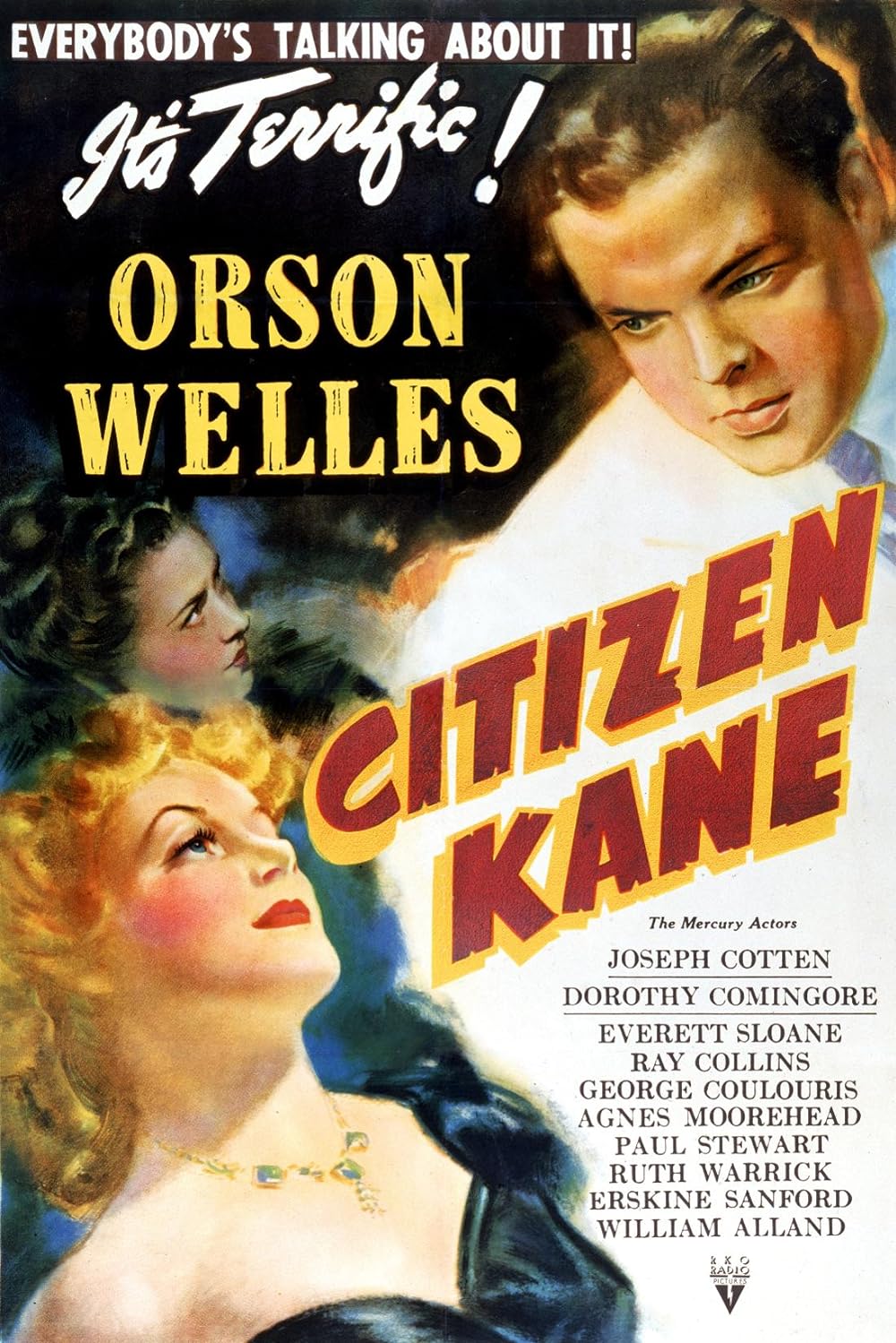Citizen Kane (1941) – The Pinnacle of Cinematic Achievement
Type: Movie
Country: United States
Genre: Drama, Mystery
Release Date: May 1, 1941
Duration: 119 minutes
Director: Orson Welles
Production Companies: RKO Radio Pictures
Cast: Orson Welles, Joseph Cotten, Dorothy Comingore, Agnes Moorehead, Ruth Warrick, Ray Collins
Quick Review:
“Citizen Kane” (1941), directed by Orson Welles, is widely regarded as one of the greatest films ever made. This American drama-mystery captivates audiences with its innovative storytelling, groundbreaking cinematography, and profound exploration of power and loss. Orson Welles’ multifaceted performance and direction create a timeless classic that continues to influence filmmakers and enthrall viewers.
Plot Summary:
“Citizen Kane” begins with the enigmatic death of Charles Foster Kane (Orson Welles), a wealthy newspaper magnate, in his grand estate, Xanadu. His last word, “Rosebud,” sparks a journalistic quest to uncover its meaning. Reporter Jerry Thompson (William Alland) is assigned to investigate Kane’s life in hopes of understanding the significance of his final utterance.
The narrative unfolds through a series of flashbacks, revealing Kane’s rise from humble beginnings to immense wealth and power. Adopted by a wealthy banker, Kane inherits a fortune and embarks on a career in journalism. He transforms the New York Inquirer into a sensationalist powerhouse, wielding influence and shaping public opinion.
Kane’s relationships, particularly with his first wife, Emily (Ruth Warrick), and his second wife, Susan (Dorothy Comingore), as well as his friendships with Jedediah Leland (Joseph Cotten) and Mr. Bernstein (Everett Sloane), are explored in depth. As Kane’s ambition grows, so does his isolation, leading to his tragic downfall. The mystery of “Rosebud” is ultimately revealed in a poignant and symbolic ending that encapsulates the themes of the film.
Characters and Performances:
- Orson Welles (Charles Foster Kane): Welles delivers a masterful performance, embodying Kane’s complexity with charisma and depth. His portrayal of Kane’s transformation from an idealistic young man to a lonely, corrupted tycoon is both powerful and nuanced.
- Joseph Cotten (Jedediah Leland): Cotten provides a compelling performance as Kane’s loyal friend and colleague, whose disillusionment with Kane mirrors the latter’s moral decline.
- Dorothy Comingore (Susan Alexander Kane): Comingore’s portrayal of Susan, Kane’s second wife, captures her transition from a naive young singer to a broken woman trapped in a loveless marriage.
- Ruth Warrick (Emily Monroe Norton Kane): Warrick brings grace and dignity to her role as Kane’s first wife, whose relationship with Kane deteriorates due to his obsessive ambition.
- Agnes Moorehead (Mary Kane): Moorehead’s brief but impactful performance as Kane’s mother adds emotional depth to the narrative, highlighting the pivotal moment of Kane’s separation from his family.
Direction and Cinematography:
Orson Welles’ direction is a tour de force, showcasing his innovative approach to filmmaking. The film’s non-linear narrative, deep focus cinematography, and inventive use of lighting and shadows create a visually stunning and thematically rich experience. Gregg Toland’s groundbreaking cinematography, with its use of deep focus, low-angle shots, and elaborate compositions, enhances the film’s dramatic impact and visual storytelling.
Music:
Bernard Herrmann’s haunting score underscores the film’s emotional and psychological depth. The music complements the narrative’s shifts in tone, from the grandeur of Kane’s early success to the melancholy of his later years. Herrmann’s use of leitmotifs and orchestration adds layers of meaning to the film, enhancing its overall atmosphere.
Why It Endures:
“Citizen Kane” endures as a cinematic masterpiece due to its innovative techniques, compelling storytelling, and profound exploration of universal themes such as ambition, power, and loss. Orson Welles’ visionary direction and performance set new standards for filmmaking, influencing countless directors and films that followed. The film’s intricate narrative structure and visual style remain a benchmark for cinematic excellence.
Its exploration of the human condition, through the rise and fall of Charles Foster Kane, resonates with audiences across generations. The mystery of “Rosebud” and its symbolic revelation add a poignant layer to the film, making “Citizen Kane” a timeless reflection on the pursuit of happiness and the cost of ambition.
In Conclusion:
“Citizen Kane” (1941) is a landmark in film history, celebrated for its groundbreaking innovations and enduring impact on cinema. Orson Welles’ visionary direction, combined with stellar performances and Gregg Toland’s masterful cinematography, creates a film that is both a technical marvel and a profound narrative. “Citizen Kane” remains essential viewing for anyone interested in the art of filmmaking and the complexities of the human experience.


